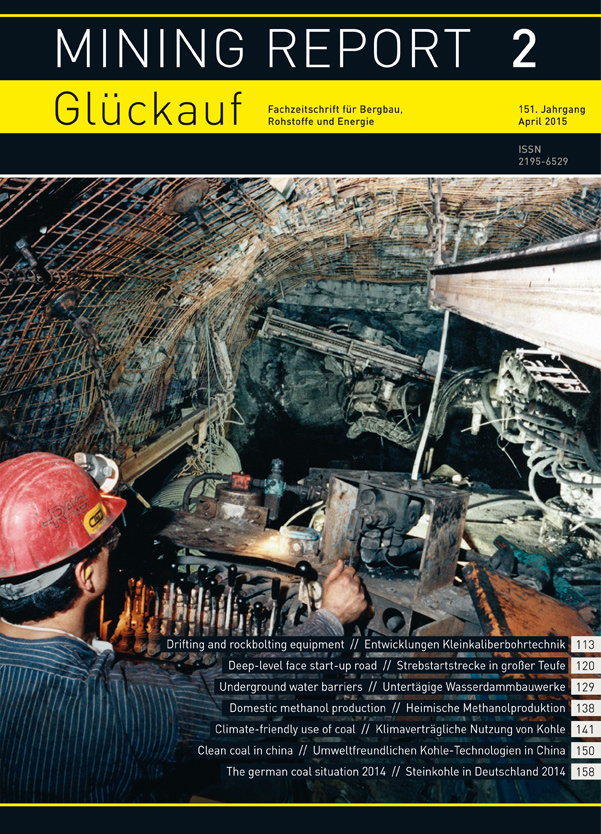Mining is and will remain an important international industry. The major globally-positioned mining companies are in need of trained personnel, as even the world‘s main mining regions suffer from a skills shortage in this area. This creates wonderful career opportunities for German-trained engineers and technicians. This is why we think it is very important to take a global view of what is happening in the mining sector beyond our shores and to look at the developments under way elsewhere in the world. This will work both ways, as our readers in other countries will also gain an insight into the realities of the German mining industry.
With my best regards
Andreas-Peter Sitte
Chiefeditor Mining Report
ISSUE 02/2015
Drilling equipment for drifting and rockbolting – current developments and future trends from a manufacturer and user perspective
Over the years underground drilling equipment for drifting and rockbolting were primarily developed with a view to increasing the penetration rate. The computer technology that gradually became available was subsequently employed for control and automation of the drilling systems. This ongoing development was not continuously pursued in more recent times until it became apparent that because of limitations to the drilling speed users and manufacturers alike were now presented with a new set of challenges.
Planning and excavation of a special-profile, deep- level face start-up road at Prosper-Haniel colliery
Learn more …
Constructing underground water barriers in areas subject to ground movement – a real engineering challenge
Learn more …Contribution of Domestic Methanol Production by applying Carbon Capture Technologies and the Future Energy Mix in NRW, Germany and the EU with Regard to Security Aspects of Supply
Learn more …Climate-friendly use of coal in power plants and in energy-intensive industrial facilities with carbon capture including the CO2 disposal in the methanol path
But still a lot has to be done to make CCU a policy option in Germany and the European Union. Starting point of a CCU strategy could be the third STOA policy option, i. e. a focus on niche markets. Electricity from wind farms without or with limited access to the electricity grid, solar electricity generated in isolated but sun-rich regions that cannot be fed in to the grid or “cheap” excess renewable electricity could be used to produce hydrogen by electrolysis.
Methanol production in a carbon capture and utilisation strategy should not be viewed just as an alternative method of producing methanol. Of course at present this is not a competitive alternative to conventional methanol production. It should rather be viewed as a means to reduce CO2 from the atmosphere and to recycle CO2 to products which can be used in the transport sector, hereby increasing security of supply and indigenous value added.
Developing high-efficiency, low-carbon, clean coal in china
In the last few decades, China has dramatically expanded access to energy and, as a result, has achieved nearly universal electrification (Figure 1). Although this accomplishment is notable, China’s energy mix is facing several pressing issues with important domestic and global implications. China is coal-rich and, for this reason, continues to rely on coal for the majority of its primary energy (over 70 %), resulting in cost, reliability, and energy security benefits. However, coal resources are being consumed rapidly. China has built, and is continuing to grow, massive industries that hinge on the availability of coal; therefore, coal conservation through more efficient utilization is in the nation’s best interest. This article was originally published in Cornerstone (Vol. 2), Issue 3, 2014, p. 29 – 33 (www.cornerstonemag.net)
Learn more …

